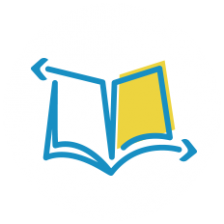Ever hear the saying “work smart, not hard”? Well, collaboration and teaming are ways of doing just that. The essential meaning of both of these terms is more than one professional working together to serve the needs of clients. In a school setting, these clients are our students, and the professionals include a variety of personnel: administrators, special education and general education teachers, teacher’s assistants, para-professionals and related service providers. In this day and age, as students are submitted to high-stakes testing and need to demonstrate progress on measurable outcomes, we should use collaborative relationships to give our students—and ourselves—more ‘bang for the buck.” We should take advantage of the knowledge and expertise of our colleagues to optimize our students’ learning. We’re all looking for the most effective and efficient ways to serve our students—why not use the skills of our colleagues to enhance what we do?
Collaborating to Achieve Common Core Standards
As a speech-language pathologist (SLP), my experience has taught me that collaborating is not only effective; it’s essential to helping our students succeed in the classroom. Speech and language are underpinnings of many of the new Common Core State Standards (CCSS); and, given SLPs’ knowledge and expertise in these areas, collaboration between teaching staff and SLPs is invaluable.
There are several models of collaboration that are beneficial for students, teachers and SLPs. The specific model used depends on everyone’s needs. Considerations include the goals and demands of the lesson (what students should be able to do as a result of the lesson and the skills they need to achieve this), correspondence to speech-language goals and objectives (what students are working on and where they are in this learning process) and the type of activity (small group, individual work, teacher-led instruction, etc.). One important point to note is that an SLP can be a valuable collaborator in any model. Let’s take a look at some of the Common Core standards in conjunction with some of the models alluded to above and see how the SLP can collaborate with the teacher:
Example 1: Two Fourth-grade English Language Arts Standards
CCSS.ELA-Literacy.SL.41: Engage effectively in a range of collaborative discussions (one-on-one, in groups, and teacher-led) with diverse partners on grade 4 topics and texts, building on others’ ideas and expressing their own clearly.
CCSS.ELA-Literacy.SL.44: Report on a topic or text, tell a story, or recount an experience in an organized manner, using appropriate facts and relevant, descriptive details to support main ideas or themes; speak clearly at an understandable pace.
Given these two fourth-grade standards in Speaking and Listening, the SLP and teacher could lead small group discussions on a curriculum-related text, such as “Bud Not Buddy” by Christopher Paul Curtis. The SLP could focus on the nuts and bolts of a discussion: She could provide a rubric for each participant about his or her role, as well as graphic organizers to capture the main idea and details of a chapter or chapters and key questions or points. The teacher could then facilitate the discussion using the information that the group covered with the SLP.
Example 2: Seven-grade English Language Arts Standards
CCSS.ELA-Literacy.RI.7.4 Determine the meaning of words and phrases as they are used in a text, including figurative, connotative, and technical meanings; analyze the impact of a specific word choice on meaning and tone.
With this seventh-grade standard in Reading Informational Text, the SLP could work with an individual student or lead an entire class lesson on figurative language. The lesson could be introduced with a warm-up activity in which pairs of students explain given examples of figurative language forms. Then, the students could be provided with a section of a text, such as a portion of “Travels with Charley: In Search of America” by John Steinbeck, and asked to identify and explain figurative language forms individually, in pairs or small groups.
Ultimately, collaboration should not be a chore, but integral to our practice. With the adoption of the Common Core standards, speech-language pathologists, teachers and staff have endless opportunities to think outside the box, use each other’s skills and expertise and work efficiently to better meet students’ needs. After all, we model for our students what effective learning, teaching and growing are.







Leave a Reply
Your email address will not be published.